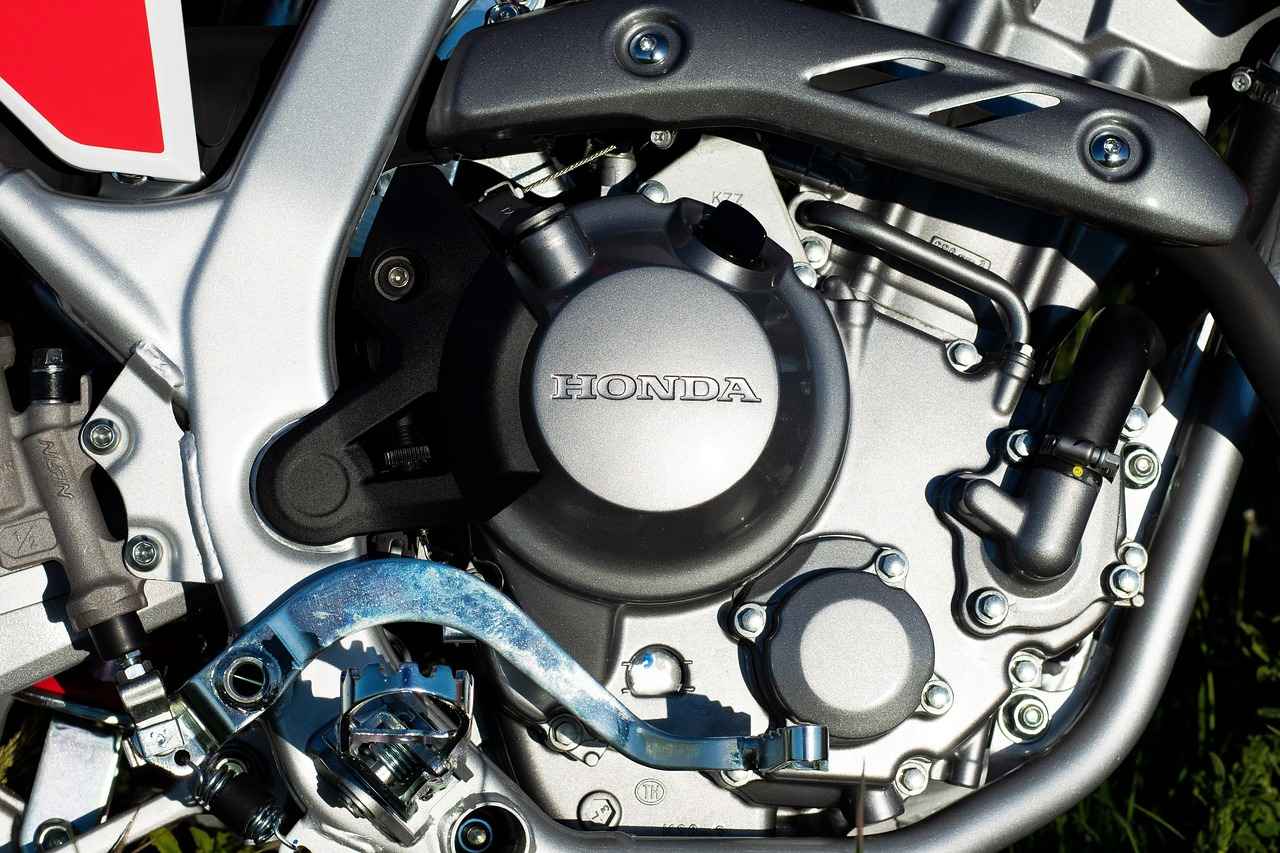is a vital skill for any Honda owner. This comprehensive guide will provide you with clear instructions to open the hood of your Honda Accord, along with helpful tips and troubleshooting advice applicable to various models and years. Being familiar with this process can save you time and ensure that you can perform necessary maintenance tasks with ease.
Understanding how to open your vehicle’s hood is crucial for various reasons:
- Routine Maintenance: Regular checks of fluids such as oil, coolant, and brake fluid are essential for vehicle health.
- Troubleshooting: If you experience engine issues, accessing the hood allows you to inspect components directly.
- Emergency Situations: Knowing how to quickly access the engine can be vital during unexpected breakdowns.
Typically, you don’t require special tools to open the hood. However, having a few items can enhance the process:
- Flashlight: Useful for visibility, especially in low-light conditions.
- Clean Cloth: Helps to keep the area tidy and free of debris.
Follow these simple steps to safely and effectively open your Honda Accord hood:
The hood release lever is generally found on the driver’s side, near the footwell. Familiarizing yourself with its location is the first step in the process.
Once located, pull the lever gently until you hear a click, indicating that the hood has been released from its latch.
Most Honda Accords come with a secondary release mechanism for added safety. Here’s how to engage it:
This mechanism is typically situated at the front center of the hood. Knowing its location can save you time during emergencies.
Gently lift the hood while pressing the secondary release. This ensures that the hood opens smoothly, preventing it from slamming back down.
If you encounter resistance or the hood won’t open, follow these troubleshooting steps:
Sometimes, debris or a misaligned hood can prevent it from opening. Inspect the area around the hood for any visible obstructions.
A broken or stuck release cable can cause opening issues. Assess the cable’s condition and consider replacing it if necessary.
Avoiding common pitfalls can make the process smoother:
Applying excessive force can damage the hood or latch mechanism. Always follow the correct procedure to avoid costly repairs.
Regular checks of the hood release system can prevent issues. Make it a habit to inspect the mechanism during routine maintenance.
Safety should always be your priority. Here are some tips to keep in mind:
Always turn off the engine before opening the hood to prevent accidental injuries or burns from hot components.
Wearing gloves and safety glasses can protect you from sharp edges and potential chemical exposure while working under the hood.
If you’re unable to open the hood after following these steps, it may be time to consult a professional mechanic:
If the hood continues to resist opening, it could indicate a more serious mechanical issue that requires expert diagnosis.
Consider scheduling regular maintenance checks with a qualified technician to ensure your vehicle’s systems are functioning correctly.

Why Is It Important to Know How to Open Your Honda Accord Hood?
Understanding how to open your vehicle’s hood is crucial for various maintenance tasks, checking fluids, or troubleshooting engine issues. Regularly accessing your Honda Accord’s engine compartment allows you to perform essential checks and services that can help maintain your vehicle’s performance.
- Fluid Checks: Regularly checking engine oil, coolant, and brake fluid levels can prevent serious engine damage and ensure your vehicle runs smoothly.
- Battery Maintenance: Knowing how to open the hood allows you to inspect the battery for corrosion or loose connections, which can affect your vehicle’s starting performance.
- Belts and Hoses Inspection: Accessing the engine compartment gives you the opportunity to visually inspect belts and hoses for wear and tear, preventing potential breakdowns.
- Engine Troubleshooting: If your vehicle exhibits signs of trouble, such as strange noises or warning lights, being able to open the hood is the first step in diagnosing the issue.
Moreover, understanding the hood mechanism can help you avoid frustrating situations. For instance, if your hood won’t open due to a malfunctioning release lever, knowing the steps to troubleshoot can save you time and stress.
When you familiarize yourself with your Honda Accord’s hood release system, you empower yourself to take charge of your vehicle’s health. This knowledge can also come in handy during emergencies, where quick access to the engine compartment may be necessary.
Additionally, being proactive about maintenance can lead to cost savings. Addressing minor issues before they escalate into major repairs can save you money in the long run. Regular checks can also enhance the lifespan of your vehicle, ensuring you get the most value out of your investment.
In summary, knowing how to open your Honda Accord’s hood is not just about accessibility; it is an important skill that contributes to the overall health and longevity of your vehicle. Whether you’re performing routine maintenance or troubleshooting unexpected issues, having this knowledge at your fingertips is invaluable.

What Tools Do You Need to Open a Honda Accord Hood?
When it comes to opening the hood of your Honda Accord, you might be surprised to learn that you don’t need a toolbox full of specialized equipment. However, having a few simple items on hand can significantly enhance your experience. Understanding what tools can assist you in this process is essential for both convenience and safety.
In general, the primary tool required to open your Honda Accord hood is the hood release lever located inside the vehicle. This lever is designed for straightforward operation, making it accessible for most drivers. However, to optimize the process, consider having the following items:
- Flashlight: A flashlight is invaluable, especially if you are in a low-light situation or need to inspect the engine bay. It helps illuminate hard-to-see areas, allowing you to check fluid levels or identify any potential issues with ease.
- Clean Cloth: Keeping a clean cloth handy is essential for maintaining visibility and cleanliness. Wiping down surfaces before and after you open the hood ensures that dirt and debris do not enter sensitive engine components.
- Gloves: Wearing gloves can protect your hands from grease and sharp edges while working under the hood. They also provide a better grip when handling various components.
- Basic Toolkit: While not strictly necessary, a small toolkit containing screwdrivers and pliers can be helpful for minor adjustments or repairs that may be needed once the hood is open.
While these tools are not mandatory, they can make the experience of opening your Honda Accord hood smoother and more efficient. Having a flashlight allows you to quickly identify the hood release lever and any other components you may need to access. A clean cloth helps maintain a tidy workspace, which is particularly important if you are checking fluid levels or performing maintenance tasks.
Furthermore, if you encounter any difficulties while attempting to open the hood, these tools can assist you in troubleshooting the problem. For instance, if the hood release lever feels stuck, using a flashlight to inspect the area can help you identify any obstructions or issues with the cable mechanism.
In summary, while you can technically open the hood of your Honda Accord without any special tools, having a flashlight, clean cloth, gloves, and a basic toolkit can enhance your experience. These items not only improve visibility and cleanliness but also ensure that you are prepared for any additional tasks that may arise during your maintenance routine.

Step-by-Step Guide to Open Your Honda Accord Hood
Opening the hood of your Honda Accord is a fundamental skill that every owner should master. Whether you need to check your engine oil, top up fluids, or perform maintenance tasks, knowing how to open your hood safely and effectively is essential. This step-by-step guide will walk you through the process, ensuring you can access your engine compartment without causing any damage.
Follow these simple steps to safely and effectively open your Honda Accord hood without causing any damage to the vehicle.
- Locate the Hood Release Lever: The hood release lever is typically located on the driver’s side, near the footwell. It is crucial to know its exact position as this is the first step in the process.
- Pull the Hood Release Lever: Once you’ve found the lever, pull it gently until you hear a click. This sound indicates that the hood has been released from its latch.
Most Honda Accord models are equipped with a secondary release mechanism for added safety. Knowing how to engage this feature is vital for fully opening the hood.
- Locate the Secondary Release Mechanism: This mechanism is usually situated at the front center of the hood. Familiarizing yourself with its location can save time, especially during emergencies.
- Engage the Secondary Release: Gently lift the hood while pressing the secondary release. This step is critical as it ensures that the hood opens smoothly, preventing it from slamming back down unexpectedly.
If you encounter resistance or the hood won’t open, follow these troubleshooting steps to resolve the issue without causing damage.
- Check for Obstructions: Inspect the area around the hood for any visible debris or misalignments that may be preventing it from opening.
- Inspect the Hood Release Cable: A broken or stuck release cable can hinder the opening process. Assess the condition of the cable and consider replacing it if necessary.
Avoiding common pitfalls can make the process smoother and help prevent potential damage to your vehicle.
- Forcing the Hood Open: Applying excessive force can damage the hood or latch mechanism. Always follow the correct procedure to avoid costly repairs.
- Neglecting Regular Maintenance: Regular checks of the hood release system can prevent issues. Make it a habit to inspect the mechanism during routine maintenance.
Safety should always be your priority when working on your vehicle. Here are some essential tips to keep in mind:
- Ensure the Vehicle is Off: Always turn off the engine before opening the hood to prevent accidental injuries or burns from hot components.
- Use Protective Gear: Wearing gloves and safety glasses can protect you from sharp edges and potential chemical exposure while working under the hood.
If you’re unable to open the hood after following these steps, it may be time to consult a professional mechanic for assistance.
- Identifying Persistent Issues: If the hood continues to resist opening, it could indicate a more serious mechanical issue that requires expert diagnosis.
- Regular Maintenance Checks: Consider scheduling regular maintenance checks with a qualified technician to ensure your vehicle’s systems are functioning correctly.
By following these guidelines, you can confidently open your Honda Accord hood and perform necessary maintenance tasks, ensuring your vehicle remains in optimal condition.
Locate the Hood Release Lever
The hood release lever is a critical component in accessing the engine compartment of your Honda Accord. Typically positioned on the driver’s side, it is located near the footwell, often just to the left of the brake pedal. Familiarizing yourself with this location is essential, as it is the first step in the process of opening the hood.
- Look under the dashboard, close to the left side of the driver’s seat.
- It may be marked with a hood icon, making it easier to identify.
- In some models, the lever might be slightly hidden, so feel around if necessary.
Once you have located the hood release lever, it is important to understand how to use it properly. This lever usually requires a gentle pull to disengage the hood latch. You should hear a distinct click when the latch is released, indicating that the hood is now free to be lifted.
If you encounter difficulty in locating the lever, consider using a flashlight for better visibility, especially in low-light conditions. This small tool can make a significant difference in ensuring you can easily find the lever without unnecessary frustration.
Why Knowing the Location Matters
Understanding where the hood release lever is located not only simplifies the process of opening the hood but also enhances your overall vehicle maintenance experience. Regularly checking under the hood is essential for monitoring fluid levels, inspecting belts and hoses, and troubleshooting any potential engine issues.
Furthermore, if you ever find yourself in an emergency situation, knowing how to quickly access the engine compartment can be invaluable. Whether you need to check the oil level or address a sudden overheating issue, being able to open the hood efficiently can save you time and prevent further complications.
What If You Can’t Find the Lever?
In rare cases, the hood release lever may be stuck or malfunctioning. If you find that pulling the lever does not produce the expected results, it may be time to investigate further. Here are some steps to consider:
- Check for any obstructions around the lever that may be preventing it from functioning.
- Inspect the release cable for signs of wear or damage, which could affect its operation.
- If necessary, consult your owner’s manual for specific instructions related to your model year.
By understanding the importance of the hood release lever and knowing its location, you can ensure a smoother experience when accessing your Honda Accord’s engine compartment. This knowledge empowers you to take charge of your vehicle’s maintenance and address any issues that may arise promptly.
Pull the Hood Release Lever
Opening the hood of your Honda Accord is a fundamental skill every car owner should possess. It allows you to check essential fluids, perform maintenance tasks, and troubleshoot potential engine issues. One of the critical steps in this process is knowing how to pull the hood release lever properly.
Once you have located the hood release lever, the next step is to pull it gently. This lever is typically positioned on the driver’s side of the vehicle, near the footwell. It’s designed for easy access, allowing you to open the hood with minimal effort.
- Step 1: Ensure the vehicle is parked on a level surface and the engine is turned off.
- Step 2: Locate the hood release lever. It may have a small icon of a hood on it.
- Step 3: Gently pull the lever towards you until you hear a distinct click. This sound indicates that the hood has been released from its latch.
After pulling the lever, it’s essential to proceed with caution. The hood will not fully open just yet. You will need to engage the secondary hood release mechanism, which is a safety feature designed to prevent accidental openings while driving.
Most Honda Accord models come equipped with a secondary release located at the front center of the hood. This mechanism ensures that the hood remains securely closed while driving. To engage this feature, follow these steps:
- Step 1: Go to the front of the vehicle.
- Step 2: Lift the hood slightly while pressing down on the secondary release. This action will allow you to open the hood fully.
While pulling the hood release lever may seem straightforward, there are common pitfalls to be aware of:
- Forcing the Lever: Always pull the lever gently. Forcing it can lead to damage.
- Neglecting to Check for Obstructions: Before pulling the lever, ensure there are no obstructions around the hood area.
Safety should always be your top priority. Here are some tips to keep in mind:
- Turn Off the Engine: Always ensure the engine is off to prevent burns or injuries.
- Use Protective Gear: Wearing gloves can protect your hands from sharp edges or chemicals.
If you find that the hood will not open despite following these steps, it may be time to consult a professional mechanic. Persistent issues could indicate a malfunction in the hood release system that requires expert attention.
In summary, knowing how to pull the hood release lever correctly is an essential skill for any Honda Accord owner. By following these steps and tips, you can ensure that you are prepared for any maintenance tasks that may arise.

How to Find the Secondary Hood Release?
Opening the hood of your Honda Accord is a straightforward task, but it can become tricky if you’re unfamiliar with the vehicle’s safety features. One essential aspect to understand is the secondary hood release mechanism, which is designed to prevent accidental openings. This guide will provide detailed insights on how to locate and engage this mechanism effectively.
The secondary hood release is a crucial safety feature found in most Honda Accord models. It serves as an additional layer of protection, ensuring that the hood does not fly open unexpectedly while driving. Understanding its function and how to use it is vital for safe vehicle operation.
To find the secondary hood release, you typically need to look at the front center of the hood. This mechanism is often a lever or latch that you can access once the primary hood release has been engaged. Familiarizing yourself with its location can save you time, especially in emergency situations when quick access to the engine compartment is necessary.
Once you’ve pulled the primary hood release lever inside the vehicle, proceed to the next step:
- Lift the Hood Slightly: Begin to lift the hood with one hand.
- Press the Secondary Release: With your other hand, locate and press the secondary release mechanism. This action will disengage the final latch holding the hood down.
By following these steps, you ensure that the hood opens smoothly, preventing any potential damage to the latch or the hood itself.
The secondary hood release is not just a redundant feature; it plays a significant role in vehicle safety. By requiring two steps to open the hood, Honda ensures that accidental openings are minimized, which is particularly important during high-speed driving or when the vehicle is parked on an incline. Understanding this mechanism enhances your ability to perform maintenance and check on engine components safely.
In some cases, you may encounter a situation where the secondary release mechanism is stuck or difficult to engage. Here are some troubleshooting tips:
- Inspect for Obstructions: Ensure that there are no debris or foreign objects blocking the release mechanism.
- Check for Cable Damage: A damaged or frayed cable can hinder the release. Inspect the cable connected to the secondary mechanism for any signs of wear.
- Apply Gentle Pressure: If the release is stuck, apply gentle pressure while attempting to engage it. Avoid using excessive force, as this can cause further damage.
When attempting to open the hood, it’s easy to make mistakes that can lead to frustration or damage:
- Forgetting the Secondary Release: Always remember that the secondary release is a critical step. Skipping this could lead to a hood that won’t open.
- Using Force: Forcing the hood open can damage the latch system. Always follow the proper procedure to prevent costly repairs.
Understanding the secondary hood release mechanism in your Honda Accord is essential for safe vehicle operation. By following the outlined steps and tips, you can ensure that you are prepared for any situation that requires you to access your engine compartment. Regular maintenance checks of the hood release system can also help prevent issues, ensuring that your vehicle remains in optimal condition.
Locate the Secondary Release Mechanism
When it comes to maintaining your Honda Accord, knowing how to access the engine compartment is essential. One crucial step in this process is understanding how to locate and engage the secondary hood release mechanism. This mechanism plays a vital role in ensuring that the hood opens safely and securely, allowing you to perform necessary checks and maintenance.
The secondary hood release is an additional safety feature designed to prevent the hood from accidentally opening while driving. This feature is especially important for ensuring that the hood remains securely latched during travel. Familiarizing yourself with this mechanism can save you time and frustration, especially in emergency situations.
The secondary release is typically located at the front center of the hood. It is essential to know its exact placement, as this can expedite the process of opening the hood when needed. Look for a lever or latch that may be slightly recessed or positioned between the hood and the grille. Familiarizing yourself with its location can save time during emergencies.
- Step 1: Stand in front of your vehicle and locate the secondary release mechanism.
- Step 2: Gently lift the hood while simultaneously pressing the secondary release. This ensures that the hood opens smoothly.
- Step 3: Once the hood is released, carefully raise it to its fully open position and secure it with the prop rod if your model is equipped with one.
Understanding how to operate the secondary hood release mechanism is crucial for several reasons:
- Emergency Situations: In case of overheating or other engine issues, knowing how to quickly access the hood can be lifesaving.
- Routine Maintenance: Regular checks on your vehicle’s fluids and components require easy access to the engine compartment.
- Safety: Engaging the secondary release properly prevents the hood from slamming down unexpectedly, which could cause injury.
While the secondary hood release mechanism is designed for reliability, issues can arise over time. Here are some common problems:
- Sticking Mechanism: Dirt or debris can cause the release to stick, making it difficult to engage.
- Broken Cable: The cable connecting the release lever to the latch may wear out or break, preventing the hood from opening.
- Misalignment: If the hood is misaligned, it may not open even when the release is engaged.
To ensure that your secondary hood release mechanism functions smoothly, consider the following maintenance tips:
- Regular Inspections: Periodically check the mechanism for any signs of wear or damage.
- Cleaning: Keep the area around the release mechanism clear of debris and dirt to prevent sticking.
- Lubrication: Apply a suitable lubricant to the moving parts to ensure smooth operation.
By taking the time to understand and maintain the secondary hood release mechanism, you can enhance your vehicle ownership experience and ensure that you are prepared for any situation that may arise.
Engage the Secondary Release
Opening the hood of your Honda Accord is a crucial skill for any car owner. It allows you to perform essential maintenance tasks, check fluid levels, and troubleshoot potential engine issues. One of the key steps in this process is engaging the secondary hood release, which adds an extra layer of safety. Below, we delve into the details of how to effectively engage this mechanism.
The secondary hood release is designed to prevent the hood from unexpectedly flying open while driving, which can lead to dangerous situations. By understanding how to engage this mechanism properly, you ensure a safe and smooth operation when accessing your engine compartment.
Follow these detailed steps to engage the secondary release on your Honda Accord:
- Locate the Secondary Release Mechanism: This mechanism is typically found at the center of the hood, just above the grille. Familiarizing yourself with its location can save you time and frustration.
- Prepare for Opening: Before you engage the secondary release, ensure that the hood is slightly lifted. This will help in smoothly accessing the release without any resistance.
- Press the Secondary Release: With one hand, gently lift the hood while simultaneously pressing the secondary release. This dual action allows the hood to pop open smoothly, preventing it from slamming back down.
While engaging the secondary release seems straightforward, there are common pitfalls to be aware of:
- Rushing the Process: Take your time when lifting the hood. Rushing can lead to misalignment or damage to the hood latch.
- Forgetting to Check for Obstructions: Always inspect the area around the hood for any debris or objects that may obstruct its opening.
If you find that the secondary release is stuck, don’t force it open. Instead, try the following troubleshooting steps:
- Inspect for Blockages: Check for any dirt or debris that may be obstructing the release mechanism.
- Use Lubrication: A small amount of lubricant can help free up a stuck mechanism. Apply it carefully and avoid over-saturating.
Safety should always be your top priority when working on your vehicle. Here are some essential tips:
- Turn Off the Engine: Always ensure the engine is off and cool before opening the hood to avoid burns or injuries.
- Wear Protective Gear: Use gloves and safety glasses to protect yourself from sharp edges and potential chemical exposure.
If you continue to experience issues with the secondary release or if the hood won’t open even after following these steps, it may be time to consult a professional. A trained mechanic can diagnose underlying issues that may not be immediately apparent and ensure that your vehicle remains safe and functional.

What to Do If the Hood Won’t Open?
When you find yourself in a situation where the hood of your Honda Accord won’t open, it can be frustrating. However, there are several troubleshooting steps you can take to resolve the issue without causing any damage to your vehicle. Understanding these steps can save you time and prevent unnecessary stress.
First, it’s essential to examine the area around the hood. Sometimes, debris or even misalignment can prevent the hood from opening properly. Look for any foreign objects, such as leaves or dirt, that might be lodged in the latch mechanism. Additionally, check if the hood itself is aligned correctly. If it appears to be off, gently push down on the hood while attempting to pull the release lever again.
The hood release cable is a critical component that can sometimes fail. If you suspect that the cable is broken or stuck, it’s important to assess its condition. You can do this by:
- Accessing the area under the dashboard where the release lever is located.
- Checking for any visible fraying or damage to the cable.
- Attempting to pull the lever slightly harder to see if it engages the cable.
If the cable appears damaged, consider replacing it to restore functionality.
Sometimes, a gentle tap on the hood can help. With the release lever pulled, lightly tap the hood near the latch with your palm. This action can sometimes free up a stuck latch. Be careful not to hit too hard, as you don’t want to cause any damage.
Having a second pair of hands can be beneficial. While one person pulls the hood release lever, another can gently lift the hood from the front. This dual action can sometimes help in disengaging a stubborn latch.
Your Honda Accord’s owner’s manual can provide specific instructions tailored to your model. Look for sections that discuss the hood release system and any troubleshooting tips that may apply. Following these guidelines can often lead to a solution.
If you’ve tried all the above steps and the hood still won’t open, it may be time to consult a professional mechanic. Persistent issues could indicate a more serious mechanical problem that requires expert diagnosis. A qualified technician will have the tools and experience necessary to troubleshoot the issue effectively.
To prevent future issues with your hood, consider scheduling regular maintenance checks with a qualified technician. Regular inspections of the hood release system can help identify potential problems before they become significant issues. Keeping your vehicle in good working order will enhance its longevity and reliability.
In conclusion, knowing what to do if your Honda Accord hood won’t open can save you from unnecessary frustration. By following these troubleshooting steps, you can address the issue effectively while avoiding damage to your vehicle. Remember, if all else fails, don’t hesitate to seek professional assistance.
Check for Obstructions
When attempting to open the hood of your Honda Accord, it’s essential to ensure that there are no obstructions preventing it from opening smoothly. Sometimes, debris or a misaligned hood can hinder the process. Here’s a detailed guide on how to effectively check for obstructions and ensure a hassle-free experience when accessing your engine compartment.
Checking for obstructions is crucial because any foreign objects or misalignments can lead to damage when attempting to open the hood. This simple step can save you from costly repairs and ensure your vehicle remains in optimal condition.
- Visual Inspection: Begin by examining the area around the hood for any visible debris such as leaves, twigs, or dirt. These can accumulate over time and block the hood from opening properly.
- Check the Hood Alignment: Sometimes, the hood may not be aligned correctly due to previous accidents or wear and tear. Look for gaps between the hood and the body of the car. If the hood appears misaligned, it may require adjustment.
- Inspect the Latch Mechanism: The latch mechanism can also become obstructed. Ensure that it is free of dirt and debris. A clean latch will function smoothly, allowing the hood to open without resistance.
- Debris: Fallen leaves, dirt, or small rocks can easily accumulate in the hood area.
- Misaligned Parts: Over time, components may shift, causing misalignment that can block the hood.
- Frozen Components: In colder climates, ice can form around the hood or latch, making it difficult to open.
- Use a Soft Brush: If you notice debris, use a soft brush or cloth to gently remove it without scratching the paint.
- Warm Up the Area: In cold weather, consider warming the area around the hood with a heat gun or hairdryer to melt any ice.
- Regular Maintenance: Incorporate hood inspections into your regular vehicle maintenance routine to prevent obstructions from building up.
If you have checked for obstructions and the hood still won’t open, it may be time to inspect the hood release cable. A broken or stuck cable can prevent the hood from unlocking. If necessary, consult a professional mechanic for assistance.
By taking these proactive steps to check for obstructions, you can ensure that your Honda Accord’s hood opens smoothly and safely, allowing you to perform necessary maintenance and checks with ease.
Inspect the Hood Release Cable
When it comes to maintaining your Honda Accord, understanding the mechanics of the hood release system is essential. One common issue that drivers may encounter is a malfunctioning hood release cable. Inspecting the hood release cable is a crucial step in diagnosing opening problems. This article will guide you through how to assess the condition of the cable and what actions to take if you find it broken or stuck.
The hood release cable is a vital component that connects the interior hood release lever to the hood latch. When you pull the lever, the cable pulls the latch mechanism, allowing you to open the hood easily. If this cable becomes damaged or stuck, it can lead to significant inconvenience.
- Difficulty Pulling the Lever: If you notice that the lever feels unusually stiff or unresponsive, this may indicate a problem with the cable.
- Hood Won’t Open: If pulling the lever does not release the hood, the cable might be broken or disconnected.
- Visible Damage: Inspect the cable for any signs of fraying, rust, or wear.
To effectively inspect the hood release cable, follow these steps:
- Access the Cable: Start by locating the hood release lever inside the vehicle. You may need to remove some interior panels to access the cable.
- Check for Tension: Gently pull on the cable to see if it has any tension. If it feels loose, it may have come undone or broken.
- Look for Damage: Carefully examine the cable for any signs of wear, such as fraying or kinks. If you see any damage, it is advisable to replace the cable.
If you determine that the cable is stuck or broken, here are some steps to consider:
- Lubricate the Cable: Sometimes, a stuck cable can be resolved with a little lubrication. Use a silicone spray to help free the cable.
- Replace the Cable: If lubrication doesn’t work, a replacement may be necessary. Consult your vehicle’s manual for specific instructions on how to replace the hood release cable.
- Seek Professional Help: If you are uncomfortable performing these tasks yourself, it is best to consult a professional mechanic.
To avoid issues with your hood release cable in the future, consider these preventive measures:
- Regular Inspections: Make it a habit to check the cable during routine maintenance. Look for signs of wear and tear.
- Keep the Area Clean: Ensure that the area around the hood release lever and cable is clean and free from debris.
- Use the Hood Release Properly: Always pull the hood release lever gently to prevent unnecessary strain on the cable.
By understanding how to inspect and maintain your Honda Accord’s hood release cable, you can avoid potential opening issues and ensure that your vehicle remains in top condition. Regular checks and prompt repairs will not only save you time but also enhance your driving experience.

Common Mistakes When Opening a Honda Accord Hood
Opening the hood of your Honda Accord may seem like a straightforward task, but there are several common mistakes that can lead to complications or damage. Understanding these pitfalls can help ensure a smooth process and protect your vehicle’s integrity.
- Forgetting to Check the Release Mechanism: One of the most frequent oversights is neglecting the hood release lever. Always ensure you pull the lever fully and listen for the click that indicates the hood is released.
- Rushing the Process: In a hurry, many drivers attempt to force the hood open without ensuring it is fully released. This can lead to broken latches or even damage to the hood itself.
- Ignoring the Secondary Release: Many Honda Accord models are equipped with a secondary release mechanism. Failing to engage this can result in frustration and potential damage if you try to lift the hood without it.
- Overlooking Obstructions: Before opening the hood, check for any obstructions or debris that may be in the way. This can include leaves, dirt, or even misaligned parts that could hinder the opening process.
- Neglecting to Inspect the Release Cable: A damaged or frayed hood release cable can be a significant issue. Regularly inspect the cable to ensure it is functioning properly; a broken cable can lead to a complete inability to open the hood.
To avoid the common pitfalls mentioned above, here are some practical tips:
- Take Your Time: Always approach the task of opening your hood with patience. Rushing can lead to mistakes.
- Familiarize Yourself with Your Vehicle: Knowing the exact location of the hood release lever and secondary mechanism can save time and prevent frustration.
- Regular Maintenance Checks: Incorporating hood release system checks into your routine vehicle maintenance can prevent issues before they arise. This includes inspecting the release cable and ensuring it operates smoothly.
- Educate Yourself: If you’re unsure about the process, consult your owner’s manual or reputable online resources for guidance specific to your Honda Accord model.
Avoiding these common mistakes is crucial for several reasons:
- Preventing Damage: Properly opening the hood reduces the risk of damaging the latch or hood itself, which can lead to costly repairs.
- Ensuring Safety: A properly opened hood allows you to safely check fluids and perform maintenance without the risk of the hood slamming shut unexpectedly.
- Enhancing Vehicle Longevity: Regular maintenance and careful handling contribute to the overall health of your vehicle, ensuring it runs smoothly for years to come.
In conclusion, being aware of these common mistakes and taking proactive steps can significantly enhance your experience when opening the hood of your Honda Accord. Remember, a little caution goes a long way in maintaining your vehicle’s integrity and ensuring your safety.
Forcing the Hood Open
When it comes to opening the hood of your Honda Accord, it’s crucial to approach the task with care and precision. One of the most common mistakes is , which can lead to significant damage. This section delves into the reasons why you should avoid this practice and offers guidance on how to handle the situation effectively.
Applying excessive force can damage the hood or the latch mechanism, leading to costly repairs. The hood and its components are designed to operate smoothly under normal conditions, but forcing them can cause misalignment or even breakage.
The hood of your Honda Accord is equipped with a latch system that securely holds it in place while driving. This mechanism is designed to prevent accidental openings but can sometimes become stuck due to various reasons:
- Corrosion: Over time, exposure to the elements can lead to rust and corrosion, making the latch difficult to operate.
- Misalignment: If the hood is not properly aligned, it may not release as intended.
- Debris: Dirt or debris can obstruct the latch, preventing it from functioning correctly.
If you find that your hood is resistant to opening, follow these steps to avoid damage:
- Check for Obstructions: Inspect the area around the hood for any visible debris that may be blocking the latch.
- Inspect the Release Cable: A malfunctioning release cable can hinder the opening process. Ensure the cable is intact and functioning.
- Gently Wiggle the Hood: Instead of applying force, gently wiggle the hood while trying to lift it. This can help free the latch without causing damage.
If the hood remains stuck despite your best efforts, it may be time to consult a professional mechanic. Persistent issues could indicate a more serious problem that requires expert diagnosis. Mechanics have the tools and experience to handle such situations without risking further damage to your vehicle.
To avoid future issues with your hood, consider the following preventive measures:
- Regular Maintenance: Include hood latch inspections as part of your routine vehicle maintenance. This can help identify potential problems before they escalate.
- Keep It Clean: Regularly clean the area around the hood and latch to prevent dirt buildup that could cause obstructions.
- Lubricate the Mechanism: Applying lubricant to the latch mechanism can help ensure smooth operation and prevent rust.
In summary, while it may be tempting to force a stubborn hood open, doing so can lead to unnecessary damage and repairs. By understanding the underlying mechanisms and following safe practices, you can maintain your Honda Accord’s hood in optimal condition. Always prioritize careful handling and regular maintenance to keep your vehicle running smoothly.
Neglecting Regular Maintenance
of your vehicle’s hood release system can lead to significant issues down the line. This essential component plays a crucial role in ensuring that your hood opens smoothly and safely. By making it a habit to inspect this mechanism during routine maintenance, you can save yourself time and money while avoiding potential headaches.
Understanding the importance of regular checks is vital for any Honda Accord owner. The hood release system consists of several components, including the release lever, cable, and secondary latch. Over time, these parts can wear down or become misaligned, making it difficult or even impossible to open the hood when needed. Regular inspections can help you identify any issues before they escalate into more significant problems.
- Check the Release Lever: Ensure that the lever is functioning correctly and is not stuck or damaged.
- Inspect the Cable: Look for any signs of wear, fraying, or corrosion. A damaged cable can lead to failure in releasing the hood.
- Examine the Latch Mechanism: Ensure that the latch is clean and free of debris. A dirty latch can prevent the hood from opening smoothly.
It is advisable to conduct these inspections at least once every six months or during your vehicle’s regular maintenance schedule. This proactive approach not only keeps your hood release system in optimal condition but also enhances your overall vehicle safety.
Being aware of warning signs can help you address issues before they become problematic. Some indications that your hood release system may need attention include:
- Difficulty Pulling the Release Lever: If you notice resistance when pulling the lever, it may indicate a problem with the cable or latch.
- Hood Not Staying Open: If the hood falls back down after you’ve lifted it, the secondary latch may be malfunctioning.
- Unusual Noises: Any grinding or popping sounds when operating the hood release can signal a mechanical issue.
Maintaining your hood release system doesn’t have to be complicated. Here are some easy DIY tips to keep everything in working order:
1. Lubricate the latch mechanism with a silicone spray to prevent rust and ensure smooth operation.2. Clean any debris or dirt around the release lever and latch to avoid obstructions.3. Check the cable for any signs of damage and replace it if necessary.
If you encounter persistent issues despite your best efforts, it may be time to seek help from a qualified mechanic. A professional can diagnose underlying problems that may not be visible during your routine checks. Ignoring these issues can lead to costly repairs or safety hazards.
In conclusion, of your Honda Accord’s hood release system can lead to frustrating situations and potential safety risks. By adopting a proactive approach to inspections and maintenance, you can ensure that your vehicle remains reliable and safe to operate. Make it a habit to check this essential system regularly, and you’ll be well-prepared for any maintenance tasks that may arise.

Safety Tips When Working Under the Hood
Safety should always be your priority when working on your vehicle. Ensuring a safe environment not only protects you but also preserves the integrity of your vehicle. Here are some essential tips to keep in mind while working under the hood of your Honda Accord.
Before you even think about opening the hood, make sure the engine is turned off. This is crucial to prevent any accidental injuries or burns from hot components. An engine running can also lead to unexpected movements, which can be dangerous.
Always wear protective gear such as gloves and safety glasses. This gear shields you from sharp edges and potential chemical exposure that can occur while working on your vehicle. Remember, safety should never be compromised.
Ensure that you are working in a well-ventilated area. Fumes from the engine or any chemicals can be harmful if inhaled. Open the garage door or work outside to allow fresh air to circulate.
Before starting any work, organize your tools. Having everything in its place minimizes the risk of accidents. A cluttered workspace can lead to injuries, so keep your tools neatly arranged and within reach.
Components under the hood can become extremely hot. Always allow the engine to cool down before touching any parts. This simple step can prevent severe burns and injuries.
When working on your vehicle, avoid wearing loose clothing that could get caught in moving parts. Opt for fitted clothing to ensure that you remain safe while performing your tasks.
If you need to lift any heavy components, always use proper lifting techniques. Bend your knees and keep your back straight to avoid injuries. If an item is too heavy, ask for help or use a mechanical lift.
For safety, it is advisable to disconnect the battery before performing any electrical work. This prevents any accidental short circuits or shocks that could be dangerous.
Always have a fire extinguisher nearby when working on your vehicle. In case of an emergency, being prepared can make all the difference. Familiarize yourself with its location and ensure it is in working condition.
If you encounter a problem that seems beyond your expertise, do not hesitate to seek professional help. Knowing your limits is crucial for your safety and the safety of your vehicle. A professional mechanic can provide the necessary assistance and ensure everything is in order.
By following these safety tips, you can create a secure working environment while maintaining your Honda Accord. Remember, safety is paramount, and taking these precautions will help you work efficiently and effectively.
Ensure the Vehicle is Off
When working on your Honda Accord, ensuring the engine is turned off is a crucial safety measure. This simple step can prevent a variety of accidents and injuries, particularly those related to hot components or moving parts. Here’s a detailed look at why this precaution is essential and how to implement it effectively.
- Preventing Burns: The engine and other components can reach extremely high temperatures during operation. By turning off the engine, you significantly reduce the risk of burns when you open the hood.
- Avoiding Accidental Injuries: With the engine off, you eliminate the risk of unexpected movements. For instance, the fan may continue to operate for a short time after the engine is turned off, posing a hazard if you are not cautious.
- Preventing Electrical Issues: Many modern vehicles, including the Honda Accord, have sensitive electrical systems. Turning off the engine helps prevent accidental short circuits or other electrical malfunctions while you are working under the hood.
To ensure your vehicle is off, follow these steps:
- Park your Honda Accord on a level surface and engage the parking brake.
- Turn the ignition key to the off position or press the start/stop button, depending on your model.
- Remove the key from the ignition to avoid any accidental start-ups.
In addition to turning off the engine, it’s wise to allow the vehicle to cool down for a few minutes. This waiting period not only helps in cooling down the engine but also gives you time to gather your tools and prepare for your maintenance tasks.
Using Protective Gear
While ensuring the vehicle is off is essential, wearing appropriate protective gear is equally important. Here are some recommendations:
- Gloves: Protect your hands from sharp edges and hot surfaces.
- Safety Glasses: Shield your eyes from debris and potential splashes from fluids.
By taking these precautions, you can create a safer environment for yourself while working on your Honda Accord. Remember, safety should always come first. If you ever feel uncertain about performing maintenance tasks, don’t hesitate to reach out to a professional mechanic.
In summary, always turn off the engine before opening the hood of your Honda Accord. This practice not only enhances your safety but also ensures a smoother and more efficient maintenance experience.
Use Protective Gear
When working on your vehicle, especially under the hood, prioritizing safety is essential. One of the most effective ways to protect yourself is by using appropriate protective gear. This section will delve into the importance of wearing gloves and safety glasses while performing maintenance tasks on your Honda Accord.
Working under the hood exposes you to various hazards, including sharp edges and hazardous chemicals. Wearing gloves and safety glasses can significantly reduce the risk of injury. Here’s why:
- Sharp Edges: Vehicle components can have sharp edges that may cause cuts or abrasions. Gloves provide a protective barrier against these potential injuries.
- Chemical Exposure: Fluids such as oil, coolant, and brake fluid can be harmful if they come into contact with your skin or eyes. Safety glasses shield your eyes from splashes and debris.
- Improved Grip: Gloves can enhance your grip on tools and components, allowing for better control and reducing the likelihood of dropping objects.
Choosing the right protective gear is vital for ensuring maximum safety. Here are some recommended types:
- Mechanic’s Gloves: Look for gloves that are specifically designed for automotive work. They should be durable, cut-resistant, and offer good dexterity.
- Safety Glasses: Select glasses that meet safety standards, providing a snug fit and proper coverage to protect against flying debris.
- Face Shields: In cases where you anticipate exposure to chemicals, consider using a face shield in addition to safety glasses for added protection.
While wearing gloves and safety glasses is crucial, there are additional safety practices to keep in mind:
- Inspect Your Gear: Regularly check your gloves and safety glasses for any signs of wear and tear. Replace them as necessary to ensure optimal protection.
- Keep Your Workspace Clean: A clutter-free workspace minimizes the risk of accidents. Ensure that tools and parts are organized to avoid tripping hazards.
- Stay Focused: Avoid distractions while working on your vehicle. Concentration is key to preventing accidents and injuries.
Even with protective gear, accidents can happen. Here’s what to do if you experience an injury:
- Assess the Injury: Determine the severity of the injury. For minor cuts or abrasions, clean the area and apply a bandage. For more serious injuries, seek medical attention immediately.
- Report the Incident: If you’re working in a professional setting, report the incident to your supervisor or safety officer.
- Learn from the Experience: Analyze what went wrong and take steps to prevent similar incidents in the future.
In conclusion, wearing gloves and safety glasses is a simple yet effective way to protect yourself from potential hazards while working under the hood of your Honda Accord. By prioritizing safety and using the right protective gear, you can ensure a safer and more efficient maintenance experience.

When to Seek Professional Help
Understanding when to consult a professional mechanic is essential for maintaining your Honda Accord’s performance and safety. If you find yourself unable to open the hood despite following the standard procedures, it may indicate a deeper issue that requires expert attention.
- Persistent Resistance: If the hood consistently resists opening, this could signal a malfunction in the hood release mechanism or latch. Ignoring these signs might lead to further complications.
- Unusual Noises: Listen for any strange sounds when attempting to open the hood. Grinding or snapping noises could suggest that the release cable is damaged or stuck.
- Visible Damage: Inspect the hood and surrounding areas for any signs of damage or misalignment. If you notice any dents or bent components, it’s best to consult a professional.
Attempting to force the hood open can cause significant damage, leading to costly repairs. If you find yourself in this situation, it’s advisable to step back and evaluate the circumstances. Here are some critical indicators that it’s time to call in the experts:
- Mechanical Failures: If the hood release lever feels loose or unresponsive, it may be a sign of internal mechanical failure. A qualified mechanic can diagnose and fix these issues safely.
- Electrical Problems: In some models, the hood release may be electronically controlled. If you suspect an electrical issue, a professional will have the tools to troubleshoot and resolve it effectively.
- Complex Repairs: If the problem extends beyond the hood release system, such as engine compartment issues, a mechanic is better equipped to handle complex repairs.
Moreover, regular maintenance checks can help prevent these problems from escalating. Scheduling routine inspections with a certified technician ensures that all components, including the hood release system, are functioning correctly.
In addition to mechanical assessments, professional mechanics can provide valuable insights into your vehicle’s overall health. They can recommend preventative measures and maintenance schedules tailored to your Honda Accord, enhancing its longevity and reliability.
Ultimately, knowing when to seek professional help is crucial for your safety and the performance of your vehicle. If you’re ever in doubt, it’s always better to err on the side of caution and consult a qualified mechanic. Their expertise can save you time, money, and the hassle of dealing with unresolved issues.
Identifying Persistent Issues
When dealing with vehicle maintenance, understanding the mechanisms of your car is essential. One common issue that many Honda Accord owners face is the difficulty in opening the hood. If you find that the hood continues to resist opening, it may signify a more serious mechanical problem that requires expert diagnosis. Ignoring this issue could lead to further complications down the line.
There are several reasons why your Honda Accord’s hood might not open smoothly. One of the most common causes is a malfunctioning hood release cable. This cable can become frayed or stuck, preventing the hood from disengaging from its latch. Additionally, if the latch itself is rusted or damaged, it can create resistance when you attempt to open the hood.
If you notice persistent resistance, it’s crucial to look for other signs that may indicate a deeper issue:
- Unusual Noises: Listen for any strange sounds when pulling the release lever, which could indicate that the cable is snagged or the latch is malfunctioning.
- Visual Inspection: Check for any visible damage or misalignment around the hood area. A bent hood or broken latch can prevent proper opening.
- Fluid Leaks: If you notice any fluid leaks under the hood, it may be a sign of a more significant problem that needs immediate attention.
If you have tried the basic troubleshooting steps, such as checking for obstructions or inspecting the hood release cable, and the hood still won’t open, it’s time to consult a professional mechanic. They can perform a thorough diagnosis to identify the root cause of the problem. A trained technician will have the tools and experience necessary to address complex issues safely.
To avoid encountering similar problems in the future, consider the following preventive measures:
- Regular Maintenance: Schedule routine checks for your hood release system during regular vehicle maintenance.
- Lubrication: Periodically lubricate the latch mechanism to ensure it operates smoothly.
- Visual Inspections: Make it a habit to inspect the hood and its components for any signs of wear or damage.
Addressing hood issues promptly can save you time and money in the long run. Ignoring the problem can lead to more significant repairs, which can be costly and inconvenient. By being proactive and seeking expert help when necessary, you ensure that your vehicle remains in optimal condition.
In summary, if your Honda Accord’s hood resists opening, it could point to underlying mechanical issues that require professional attention. By staying vigilant and maintaining your vehicle, you can prevent such problems from escalating and ensure a smoother driving experience.
Regular Maintenance Checks
Regular maintenance checks are an essential aspect of vehicle ownership, particularly for ensuring the longevity and efficiency of your Honda Accord. By scheduling these checks with a qualified technician, you can significantly reduce the risk of unexpected breakdowns and costly repairs. Here’s a comprehensive look at why regular maintenance is crucial, what to expect during these checks, and how they benefit your vehicle.
Regular maintenance checks are vital for several reasons:
- Preventive Care: Routine inspections can identify potential issues before they escalate into major problems.
- Safety: Ensuring that all vehicle systems are functioning correctly is crucial for your safety and that of your passengers.
- Performance: Regular checks help maintain optimal performance, fuel efficiency, and overall driving experience.
- Value Retention: Keeping your vehicle in good condition helps retain its value over time, making it a smart investment.
When you take your Honda Accord for a maintenance check, here are some of the key areas a technician will focus on:
- Fluid Levels: Checking and topping off engine oil, coolant, brake fluid, and transmission fluid.
- Brakes: Inspecting brake pads, rotors, and fluid to ensure optimal braking performance.
- Tires: Assessing tire pressure, tread depth, and overall condition to promote safety and efficiency.
- Battery: Testing battery health and connections to prevent starting issues.
- Lights: Ensuring all exterior and interior lights are functioning properly for safety.
The frequency of maintenance checks can vary based on your driving habits and the model year of your Honda Accord. However, a general guideline is to schedule checks every 5,000 to 7,500 miles or at least twice a year. It’s also advisable to refer to your vehicle’s owner manual for specific recommendations.
Investing in regular maintenance checks brings numerous benefits:
- Increased Reliability: A well-maintained vehicle is less likely to experience unexpected breakdowns.
- Enhanced Safety: Regular checks help ensure that all safety features, like brakes and lights, are functioning correctly.
- Improved Fuel Efficiency: A vehicle in good condition will typically consume less fuel, saving you money in the long run.
- Peace of Mind: Knowing that your vehicle is regularly checked by a professional can provide peace of mind while driving.
When selecting a technician for your maintenance checks, consider the following:
- Certification: Look for certified mechanics who have experience with Honda vehicles.
- Reputation: Read reviews and ask for recommendations to find a trusted service provider.
- Services Offered: Ensure they provide comprehensive services that cover all aspects of vehicle maintenance.
In conclusion, regular maintenance checks are not just a recommendation but a necessity for any Honda Accord owner. By prioritizing these checks with a qualified technician, you ensure that your vehicle remains in top condition, enhancing both safety and performance.
Frequently Asked Questions
- How do I locate the hood release lever on my Honda Accord?
The hood release lever is typically found on the driver’s side, near the footwell. It’s often a small lever that you can pull to release the hood latch.
- What should I do if the hood won’t open after pulling the release lever?
If the hood doesn’t open, check for any obstructions around the hood area. Sometimes debris can block it. If that’s not the issue, inspect the hood release cable for any damage.
- Is there a secondary hood release mechanism?
Yes, most Honda Accords have a secondary hood release mechanism located at the front center of the hood. You need to press this while lifting the hood to fully open it.
- How can I prevent common mistakes when opening the hood?
To avoid mistakes, never force the hood open. Always follow the proper steps and make it a habit to check the hood release system during regular maintenance.
- When should I seek professional help for my Honda Accord hood issues?
If you’ve tried the above steps and the hood still won’t open, or if you notice persistent issues, it’s best to consult a professional mechanic for a thorough diagnosis.



